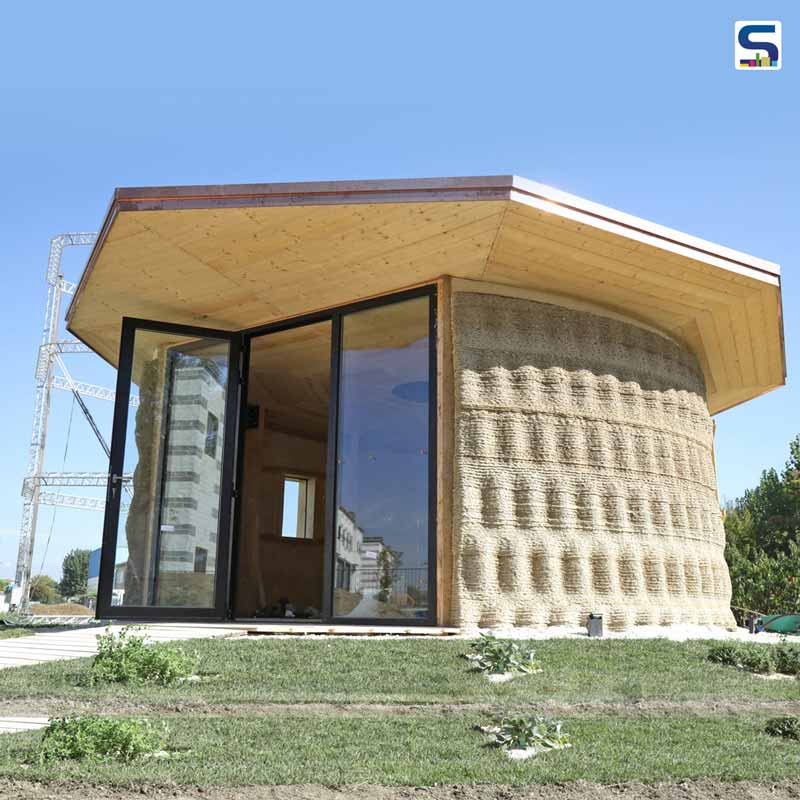
Italian 3D-printing technology developer WASP constructed this beautiful, eco-sustainable 3D printed house using natural materials such as soil and agricultural waste. It is built to demonstrate the abilities of the company's 3D printer Crane WASP. The house was printed on-site in Massa Lombardo, a town in the Italian region in October 2018. The project is named 'Gaia' because of its use of raw earth as the main binder of the essential mixture. The firm used 25% of soil taken from the site (containing 30% clay, 40% silt and 30% sand), 25% rice husk, 40% from straw chopped rice and 10% hydraulic lime). Read this post below at SURFACES REPORTER (SR) to know more interesting points about the project:
Also Read: Indias first 3D printed House by IIT-M alumni | SR News update
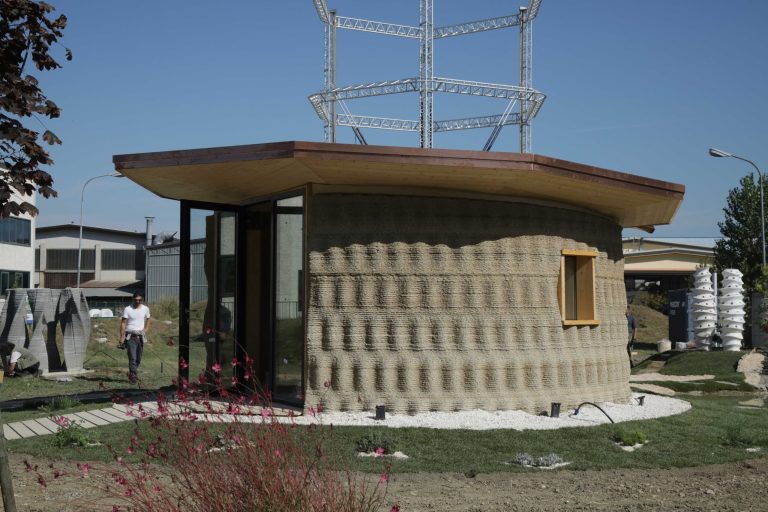
The company claims that the resulting product is completely biodegradable and, "If the building isn't maintained, it will turn back into soil," stated the company.
Construction Process
The house was built with the modular Crane Wasp printer that can produce homes in a number of formats and sizes.
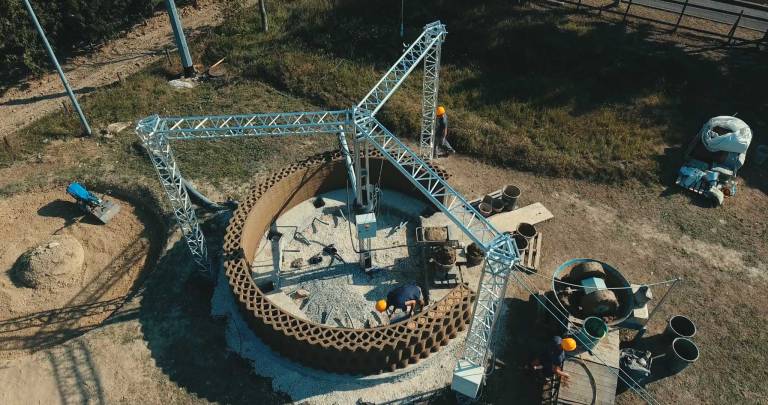
At first, the constituent mixture is layered using a 3D-printer hovering over through a crane making walls with vertical voids inside, which are then filled with the waste from rice production, such as chopped rice husks and straws for insulation. RiceHouse supplied the vegetable fibres for the project.
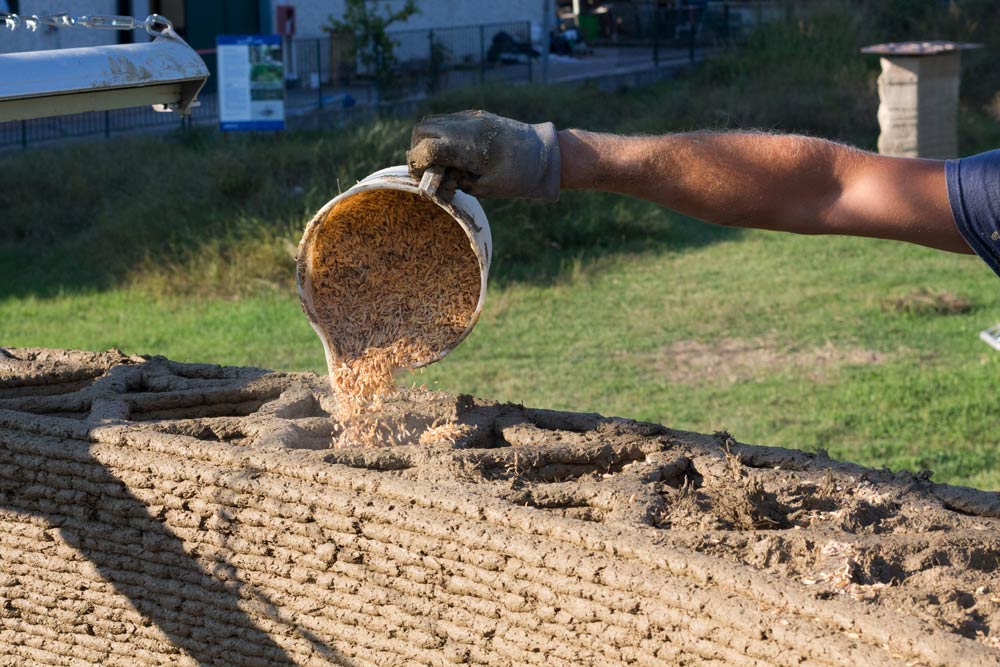
According to the firm, this insulating method keeps the temperature inside the house comfortable and warm, avoiding the need for using heaters during the winter.
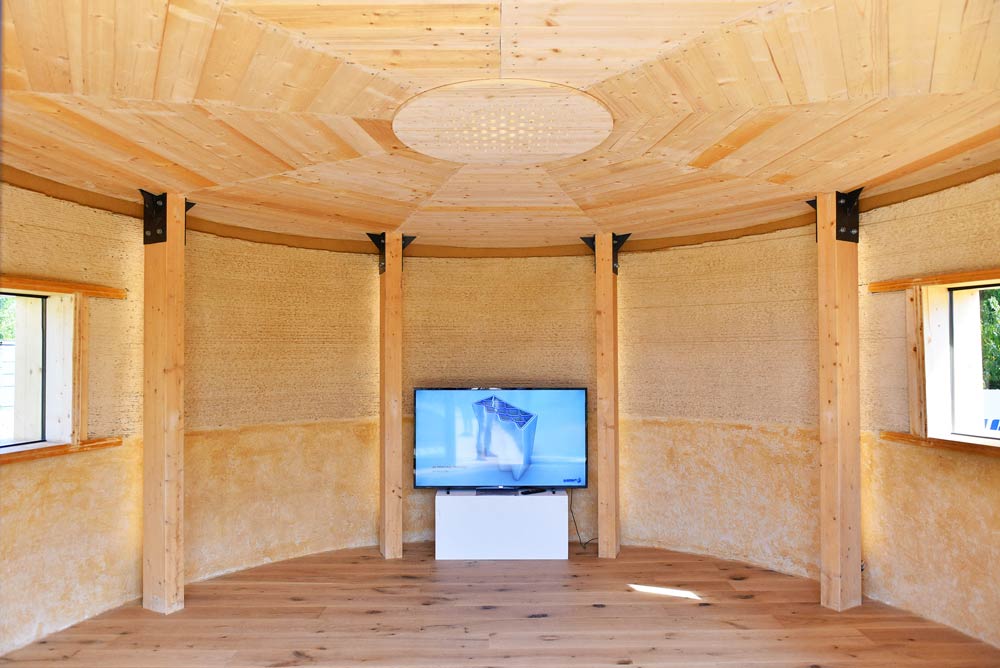
The mixture is layered using a 3D printer suspended from a crane, creating walls with vertical cavities inside, which are then filled with rice husks for insulation.
Also Read: Casa COVIDA is a 3D Printed Home Made From Sand, Straw, Mud, Clay And Other Organic Materials | California | Emerging Objects
They kept the outer cavity in the wall empty for proper air circulation in the structure and allowed for an energy supply to be fixed within the home walls.
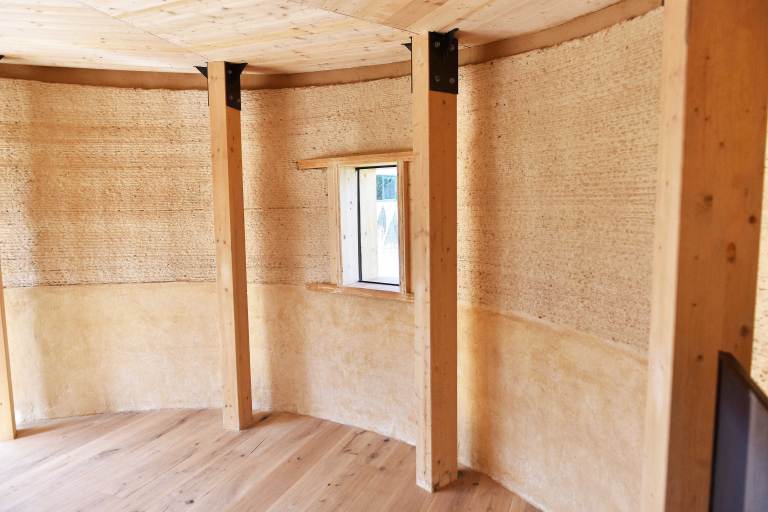
A bio-plaster for coating the structure's internal walls and the roof are also made from rice husks to provide a layer of insulation.
Time and Money Efficient Project
The company finished the construction of the house within ten days (100hours). Also, the mud mixture used to create the house cost them less than a thousand pounds. So, overall, it is a cheap and time-saving project.
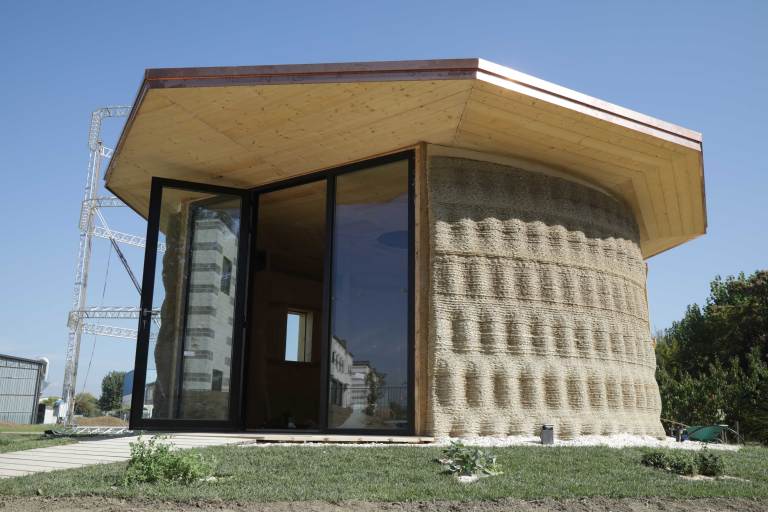
"Gaia is a highly performing structure in terms of energy, with almost no environmental impact," the company stated
Based on the statements said by the WASP, 'agricultural waste could become a major resource in the building industry.' The company further said, "It is possible to conceive a future scenario in which one hectare of cultivated paddy field can become 100 square metres of built environment,"
Also Read: A 3D Printed Bio Based Micro Home for a Post Covid Future by Oliver Thomas and Amey Kandalgaonkar
Although this house was built with waste from agricultural production, several other natural and recycled materials are being used in 3D printing for construction these days.
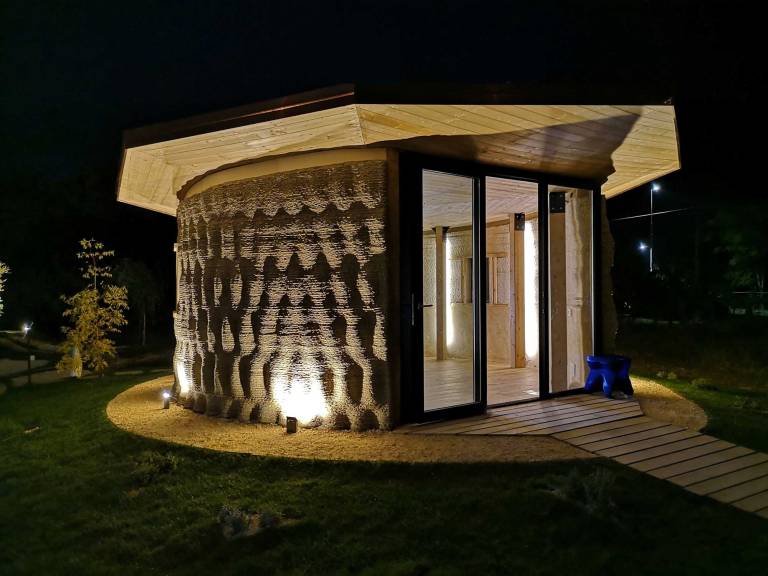 Such 3D printed projects offer an opportunity to disclose the numerous potentials that 3D printing has thanks to the firms who are using natural materials during construction to ensure minimum environmental impact.
Such 3D printed projects offer an opportunity to disclose the numerous potentials that 3D printing has thanks to the firms who are using natural materials during construction to ensure minimum environmental impact.
Project Details
Project Name: Gaia
Location: Via Castelletto 104, Massa Lombarda (Ra)
Design: Wasp In Collaboration With: Ricehouse
3D printer: Crane WASP Floor area: 20 sq.m.
Printed Building Envelope: 30 sq.m.
Total cost of materials used for the wall: 900 €
Materials: Raw earth, straw, rice husk, lime.
Construction time: 100 hours
Images and Videos: © WASP
Keep reading SURFACES REPORTER for more such articles and stories.
Join us in SOCIAL MEDIA to stay updated
SR FACEBOOK | SR LINKEDIN | SR INSTAGRAM | SR YOUTUBE
Further, Subscribe to our magazine | Sign Up for the FREE Surfaces Reporter Magazine Newsletter
Also, check out Surfaces Reporter’s encouraging, exciting and educational WEBINARS here.
You may also like to read about:
First 3D-Printed Building in India, Made Using Local Building Materials
Scientists at GE Research 3D Printed A Portable Device That Produces Water Out Of Thin Air
Is 3D Printing the Future of Manufacturing Ecosystem?
7 Popular 3D Modelling Software in Architecture | Surfaces Reporter
And more…